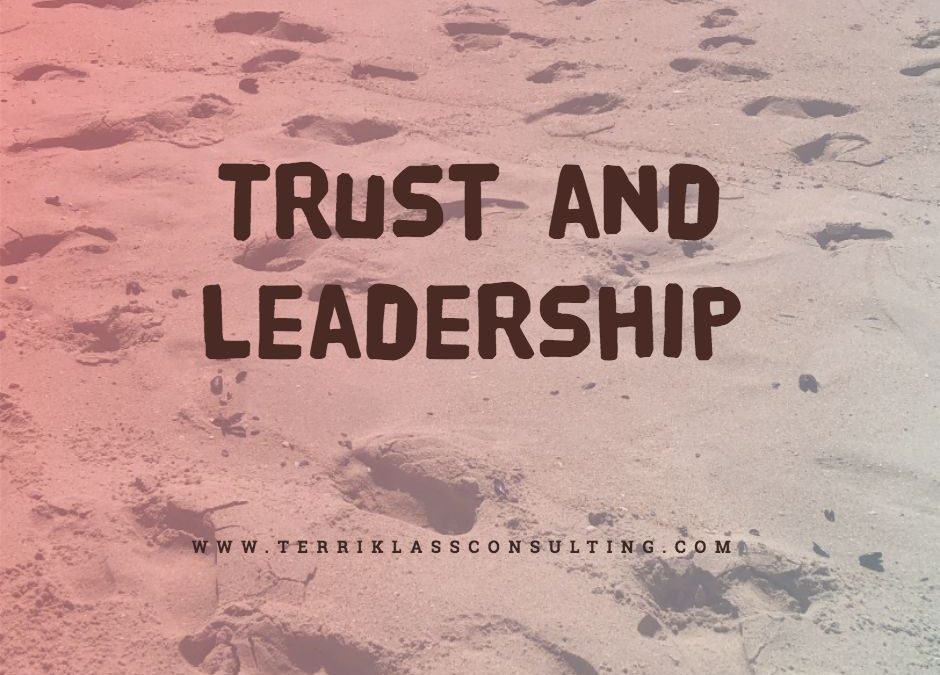Why is trust so out of reach for some teams or organizations? This was the question we dialogued about in my leadership program this past week. It was clear that the participants were operating in a workplace that lacked trust. They spoke of the importance of cultivating a trusting environment but they just weren’t sure how to go about it. So we began with a basic definition of trust.
“Trust is being loyal”, said one individual.
“Trust is being honest and truthful”, chimed in another person.
“Trust is being reliable and dependable”, shared a third participant.
What began to transpire was that trust meant different things to each person. Defining trust wasn’t as easy as they thought. And that is the challenge with trust. It really means different things to each of us. So after combining all of the definitions we decided to focus instead on ways to create trust in their teams.
Here are five trust building strategies for leaders:
1. Develop Meaningful Relationships
If we treat team members and bosses with respect and kindness we will be more likely to be trusted. How do you feel when people respect your work and suggestions? We trust people who acknowledge that we are adding valuable contributions. They see our worth and we in turn feel more connected. Additionally getting to know them on a personal level can continue to build our level of trust.
We are more likely to trust people who see our worth and value our contributions. Share on X2. Be Clear On Expectations
How can leaders be trusted on their teams if they aren’t clear in what is expected of each individual? When we are certain about our role and responsibilities we can perform in a successful way. To add clarity of expectations to our leadership toolbox:
- Partner with others in deciding what each team member should focus on.
- Write out expectations to make sure there are no misunderstandings.
- Establish specific actions and deadlines.
- Make sure there are follow-up check-ins.
3. Do What You Say You Will Do
There is nothing that betrays a trust more than committing to doing something and not following through. This can be a real deal breaker for cultivating trust among teams. As one of the participants shared trust means being able to depend on each other and what we promise to contribute.
4. Stop Blaming
Instead of pointing fingers and blaming the people they work with for a mistake they made, leaders hold themselves accountable. Trust is built when honesty is part of our actions.
- Admit a mistake when you make it.
- Remind yourself that you will be trusted more if you are truthful rather than pinning the error on another individual or department.
- If you are leading a project and something is forgotten, be accountable for everyone.
- Don’t forget to give praise and credit often.
5. Share Your Gifts and Strengths
We develop trust with our teams when we help out by sharing our strengths and expertise. Sometimes leaders forget that by offering to mentor a team member doesn’t only benefit the mentee. The mentor builds rapport and trust with the mentee and often grows their leadership skills exponentially through the relationship. Developing others is a critical piece to leadership; perhaps the most important role of all.
What trust building strategies have helped you become a more trustworthy leader?


You hit the nail on the head when you mentioned the word “kindness.” No one likes a bully who pushes their way through people or problems. To be kind is to show human decency and respect, both for themselves and others. If you want to be treated with kindness and fairness, you need to show it first. In the process, it builds rapport and trust. Great article, Terri!
Treating our team members and bosses with respect and kindness cultivates positive relationships as well as a more trusting team. That ultimately will create a workplace where each person wants to pitch in when deadlines are looming and hard to meet. Accountability and transparency will be the culture.
Thanks LaRae for adding your thoughts!